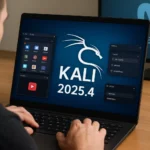In a significant cybersecurity development, Microsoft has recently patched a critical vulnerability in its Windows SmartScreen feature. This flaw, identified as CVE-2024-38213, allowed attackers to bypass the Mark of the Web (MotW) warnings, potentially exposing users to malicious content. The vulnerability, which was being actively exploited as a zero-day threat, highlights the ongoing challenges in maintaining robust security measures in modern operating systems.
Understanding the SmartScreen Vulnerability
SmartScreen, a protective feature introduced in Windows 8, is designed to safeguard users against potentially harmful content. It activates when users attempt to open files downloaded from the internet, which are typically marked with the MotW flag. The recently patched vulnerability allowed attackers to create files that circumvent these MotW warnings, effectively neutralizing a key defense mechanism.
According to Microsoft’s advisory, the vulnerability could be exploited remotely by unauthenticated attackers, though it required user interaction. This means that while the flaw was serious, it still relied on social engineering tactics to trick users into opening malicious files.
The Discovery and Exploitation Timeline
Peter Girnus, a security researcher at Trend Micro, shed light on the discovery and exploitation of this vulnerability. Remarkably, the flaw had been actively exploited by hackers as early as March 2024. Upon discovery, Trend Micro promptly alerted Microsoft, leading to a patch being developed and quietly released in June 2024. However, due to an oversight, Microsoft failed to issue a corresponding security advisory in both June and July.
Connection to Previous Campaigns
The vulnerability’s exploitation was linked to the activities of DarkGate operators, who had previously leveraged another zero-day flaw (CVE-2024-21412) earlier in the year. These attackers used the SmartScreen bypass to deploy malicious payloads disguised as legitimate software installers, including those for popular applications like Apple iTunes, Notion, and NVIDIA.
Implications for Cybersecurity
This incident underscores the importance of prompt vulnerability disclosure and patching. It also highlights the sophisticated nature of modern cyber threats, where attackers quickly adapt to exploit newly discovered weaknesses in security systems. The fact that the vulnerability remained actively exploited for several months before public disclosure raises questions about the effectiveness of current threat intelligence sharing practices within the cybersecurity community.
Recommendations for Users and Organizations
In light of this vulnerability, it is crucial for Windows users and system administrators to take the following steps:
- Ensure all systems are updated with the latest security patches from Microsoft
- Implement robust email filtering and web browsing protection to reduce the risk of users encountering malicious files
- Conduct regular security awareness training to help users identify and avoid potential phishing attempts and social engineering tactics
- Consider implementing additional layers of security, such as application whitelisting and advanced endpoint protection solutions
The discovery and patching of CVE-2024-38213 serve as a stark reminder of the ever-evolving landscape of cybersecurity threats. As attackers continue to find new ways to bypass security measures, it is imperative for both software developers and end-users to remain vigilant and proactive in their approach to cybersecurity. Regular updates, comprehensive security strategies, and ongoing education are key to maintaining a robust defense against emerging threats in our increasingly digital world.






